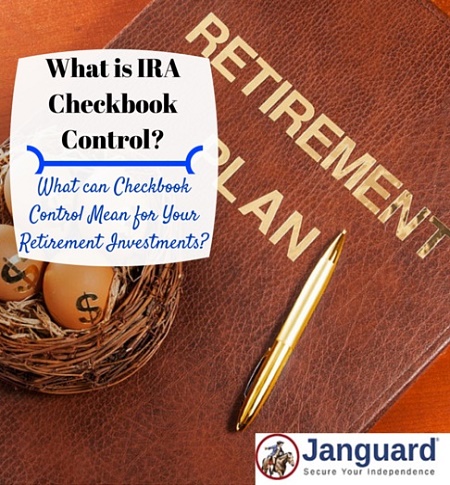How much does it cost to set up and IRA checkbook control and is it worth it?
Self-directed IRA accounts have been popular since first created in 1974. The retirement account allows you more control over your investments and generally lower fees compared to a 401K plan or other retirement plan. Recently, a twist on the structure has been established with IRA checkbook control and the potential to address a major problem for savers.
IRA checkbook control accounts have only just been allowed by the IRS in a 2013 exemption and many savers still don’t understand the benefits and costs with the new type of account. Follow the guide below to get the facts on an IRA with checkbook control and the key difference with a traditional self-directed IRA.
Why Would You Want IRA Checkbook Control?
A self-directed IRA is a retirement savings account managed by a custodian but where you control the investments in which it invests. When you want to make an investment, you contact the account custodian and they go through the process of actually buying the asset. The process can take time for investments outside of stocks and bonds traded on an exchange but allows for greater flexibility and investment options compared to a 401K plan.
The benefit of a self-directed IRA over other retirement investment accounts is the control you have over your investments. Employer 401K plans are often limited to mutual funds and other investments that provide the largest commissions or kickbacks to advisors.
By comparison, a self-directed IRA can invest in a range of assets including:
- Stocks and Bonds
- Real Estate and Mortgages
- Precious Metal
- Bank CDs and Notes
- Private Placements and Public Limited Partnerships
- And more…
The disadvantage of the self-directed IRA structure is the time it can take to make an investment. Since your IRA custodian controls the funds, they must initiate the transfer or purchase. Besides having to convince your custodian to make the investment, sometimes a difficult task if they don’t want to allow manage the asset, you must also wait for them to get around to the actual process of releasing funds.
What Gives an IRA Checkbook Control?

Creating the LLC requires an EIN and articles of incorporation but is something that is managed by the IRA custodian. Once the process is complete and the checking account is funded, you can write checks on the account to buy investments for your IRA. The custodian still manages the account to make sure investment returns are not received by the saver but having IRA checkbook control can cut down on the time and cost involved with investing in non-traditional investments.
The IRS initially tried to fight the ability of savers to set up an LLC to own their IRA assets but lost an important court case in 1996. This set up the precedent and the IRS eventually agreed with a 2013 exemption to the prohibited transactions rule and allowing savers to control their own retirement assets through an LLC and checkbook control.
Setting up a self-directed IRA LLC generally costs between $1,295 and up to $2,000 depending on the firm you choose. You’ll also be responsible for paying an annual custodial fee which can be as high as $350 and will be deducted from your IRA account. Those expenses can be prohibitive for smaller IRA accounts but make more sense for larger retirement savings. An initial fee of $2,000 would be a 4% burden on a $50,000 IRA but a much smaller 0.8% on a $250,000 account.
Is an IRA with Checkbook Control Right for You?
Besides the costs of setting up a self-directed LLC, you may not need to have checkbook control of your IRA. If you only plan on investing occasionally or in publicly-traded investments like stocks or bonds, your IRA custodian can take care of the investment rather easily.
If you plan on investing regularly and in assets that require quick payment, like mortgage deeds or auctioned real estate, then an IRA with checkbook control will make things much easier.
Understanding IRA checkbook control as well as the costs and benefits will help you decide if the new retirement account is right for your needs. Most savers will be fine with a traditional self-directed IRA but some will need the freedom and speed which only checkbook control can provide.

